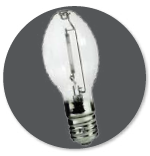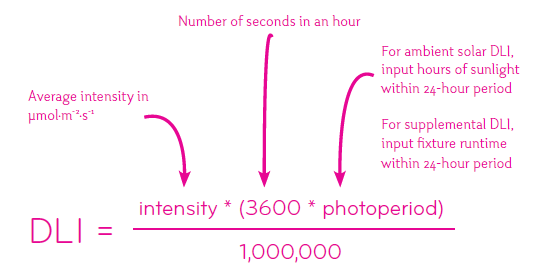LumiGrow has developed a guide, “How to Grow Cannabis with LED Grow Lights”, to instruct growers on how to use LED lighting strategies to maximize profits, boost yields, increase crop quality, and elicit desired plant characteristics. Check out the original PDF on their website if you would like to read the full article!

The following is an article produced by a contributing author. Growers Network does not endorse nor evaluate the claims of our contributors, nor do they influence our editorial process. We thank our contributors for their time and effort so we can continue our exclusive Growers Spotlight service.
Preface on Cannabis
Cannabis is undoubtedly shifting the horticultural industry’s focus as legalization of the high-value crop continues sweeping the world. Traditionally grown using guerilla agricultural tactics, cannabis cultivation is rapidly advancing to incorporate world-class technologies and practices.
As Cannabis enters a new era of cultivation where profit margin compression is driving competition, it has become crucial for growers to explore new strategies for boosting their bottom-line.
The key to success with an LED strategy is to change your cultivation ecosystem by rebalancing abiotic limiting factors to account for differences in light levels. This guide is your roadmap to addressing these limiting factors and deploying a successful LED strategy.
The Basics of Horticultural Lighting
Horticultural lighting has remained rudimentary for the past 60 years. In the late 1950’s and early 1960’s, metal halide and high-pressure sodium (HPS) lights were developed. At that time, their high electrical efficiency, long life span, and relatively broad spectrum provided growers the best option in lighting.
Editor’s Note: Check out our related article on the history of artificial lighting.
The light emitting diode (LED) is the newest generation of lighting technology in the horticultural field. The first LEDs to emit visible light came in the early 1960’s. The past 50+ years have seen many advancements in LED technology. Beginning with LEDs that barely produced enough light to see in a dark room, modern LEDs put out light levels that perform as well as any other horticultural lighting technology on the market. Just as HPS lights were once the most efficient, longest-lasting solution, LEDs now achieve the same horticultural lighting requirements with much higher efficiency and additional functionality.
Differences Between LED and HPS Lighting
HPS Lighting

In high pressure sodium (HPS) lit cultivations, flower development may be related to the temperature of the canopy, as well as other factors. We generally see top-heavy flower development within the canopy, usually to a depth of 18-24”.
LED Lighting

With LED fixtures, the floral morphology becomes distinctly less “top heavy”, as flowers develop more evenly across the vertical crop profile, creating the opportunity for greater total yield. Flowers grown under the LEDs see less variance in plant structure with up to 3 feet of consistent development compared to 18-24” seen with HPS. For this reason, it's important to adjust the temperature in your room to account for less heat, ultimately boosting yields and saving electricity.
Understanding Light’s Characteristics
Light Intensity
Intensity is the amount of light supplied to the plant. Two ways to measure intensity are by using Photosynthetic Photon Flux Density (PPFD) and the Daily Light Integral (DLI).
PPFD
An instantaneous measurement of the number of photons received by a plant that can be utilized for photosynthesis is called the photosynthetic photon flux density (PPFD), measured in micromoles per square meter per second (μmol·m-2·s-1). PPFD is used to understand how much light a plant is receiving at any given moment, and is most often used for indoor cultivation where light fixtures are the only source of light.
DLI
DLI is an important variable to measure in every greenhouse because it influences plant growth, development, yield, and quality. DLI is a daily measurement of the number of photons received in a grow area that can be utilized for photosynthesis. DLI is calculated by looking at total PPFD over a 24-hour period, and is measured in mol*m-2*d-1. It’s especially important to think about light in terms of DLI when growing in a greenhouse where plants are receiving varying amounts of sunlight as well as supplemental lighting.
Calculating your ambient or supplemental DLI is easy using the following equation:

Light Quality
Quality refers to the spectra or wavelengths of light that plants receive. Plants sense wavelengths from ultraviolet (UV) to far red light, 280-800nm, which is described as the range of Photo-Biologically Active Radiation (PBAR). The wavelengths ranging from 400-700nm are used for photosynthesis and are referred to as Photosynthetically Active Radiation or PAR.
Within PAR, blue light is typically defined as including the wavelengths from 400-500 nm, green light from 500-600 nm, and red light from 600-700 nm. In addition to driving photosynthesis, light quality is responsible for other plant responses, such as reducing internodal spacing, regulation of the circadian clock, flowering, crop morphology, as well as cannabinoid and terpene levels.
With LumiGrow lights, light quality can be adjusted throughout the growth stages to control crop growth in a more precise way. It’s important to note that wavelengths outside of the PAR range are used for secondary plant responses.
Photoperiod
Photoperiod is the duration of light a plant receives in a day. Plants are skilled at measuring the length of the day (light period) and the relationship of the day to the night (dark period or scotoperiod). The response to the light-dark cycle is known as photoperiodism. Photoperiod manipulation is commonly used to steer plants from vegetative to reproductive growth.
Cannabis is an obligate short-day plant, meaning that it flowers when the dark period is shifted to a critical length. This translates into a recommended 12 hour photoperiod when lighting cannabis for flowering and 18 hours a day in the vegetative phase.
Learn More
Want to read more about LumiGrow products, or skip the wait for the next set of articles? You can download the PDF here, and read ahead!
Want to check some more LEDs? Click here!
10 Best Gift Ideas for Cannabis Connoisseurs and Growing Aficionados (2022)
December 7, 2022Developing and Optimizing a Cannabis Cultivation System
December 14, 2021Dealing with Insomnia: How Can CBD Help?
December 10, 2020Your Guide to Sleep and CBD
December 7, 2020
Do you want to receive the next Grower's Spotlight as soon as it's available? Sign up below!
Resources:
- Want to get in touch with LumiGrow? They can be reached via the following methods:
- Website: www.lumigrow.com
- Phone: 800-514-0487
- Email: info@lumigrow.com

Do you have any questions or comments?

About the Author
LumiGrow, Inc., the leader in smart horticultural lighting, empowers growers and scientists with the ability to improve plant growth, boost crop yields, and achieve cost-saving operational efficiencies. LumiGrow offers a range of proven grow light solutions for use in greenhouses, controlled environment agriculture and research chambers.